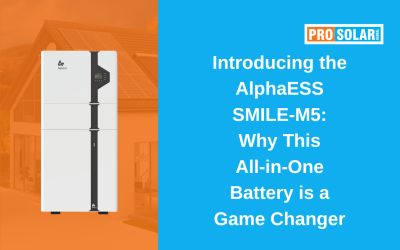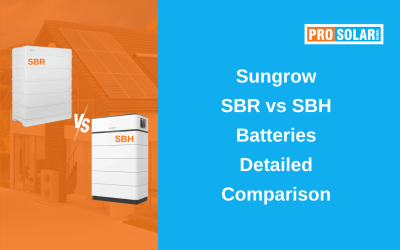Why 10 Years Is a Key Milestone in Solar
With over 3.6 million rooftop solar installations across Australia as of 2024, a growing number of homeowners now have systems 10+ years old. If you’re one of them, you may be asking:
- Is my system still efficient?
- Should I upgrade or replace it?
- Am I missing out on new rebates or technology?
Let’s break it down clearly—using the latest available information from the Australian Government and leading solar bodies—to help you make the right choice.
Panel Performance: What Declines, What Doesn’t?
What to Expect After 10 Years
Solar panels don’t stop working after 10 years—but they do lose efficiency gradually.
- Most Tier 1 panels degrade by ~0.5% per year
- After 10 years, that’s about 5% total performance loss
- A panel rated at 6.6kW in 2014 may now deliver around 6.3kW
Should You Worry?
No. If your system was well-installed and maintained, it likely still generates strong returns. Most systems pay themselves off in 5–7 years, so you’re already in profit by year 10.
The Inverter Factor: A Common Failure Point
Inverters are the workhorse of your system—and the most common issue after 10 years.
- String inverters often last 10–12 years
- Microinverters may last longer (up to 20–25 years)
- Faulty inverters = low or no solar generation
What to Do:
If your system is producing far less than expected, your inverter may need servicing or replacement. Modern inverters come with better monitoring and hybrid options for battery integration.
Maintenance & Cleaning: Keep It Working Harder
Many 10+ year-old systems haven’t been cleaned or serviced in years.
Basic Steps You Should Be Doing:
- Professional cleaning every 1–2 years (dust/pollen can reduce output by up to 20%)
- Check loose cabling, corrosion, and inverter display
- Use smart apps or portals to track performance (many older systems lack this—time for an upgrade!)
Need help with maintenance or a system health check? Call Prosolar Global on 1300 181 191.
Time for an Upgrade? Battery + Smart Inverter Options
Solar tech has evolved dramatically over the past 10 years.
Consider:
- Hybrid inverters that prepare you for battery use
- Battery storage (with new 2025 federal rebates available)
- Smart monitoring via mobile apps
According to the Clean Energy Regulator, modern solar systems generate more electricity from the same number of panels, thanks to improved panel efficiency, making them more compatible with battery rebates and recent incentives announced in July 2025.
Feed-In Tariffs: Legacy vs Modern
If you installed your system before 2012, you might be on a high legacy feed-in tariff (e.g., 44c/kWh in QLD).
Caution:
Upgrading your system may void this rate. But if your FiT is already at a low rate (e.g., 5–10c/kWh), adding a battery or upgrading may actually increase your savings.
Recycle or Repower?
The average panel lasts 20–25 years, but some systems may be due for replacement earlier due to poor initial quality.
Recycle When:
- Panels show cracks, yellowing, or hot spots
- System fails safety checks or drops below 70% output
Australia is building solar recycling facilities in states like NSW, VIC and QLD. Prosolar Global partners with licensed recyclers to ensure your old panels don’t end up in landfill.
What Are Your Options After 10 Years?
| Option | When to Consider | Pros | Cons |
| Keep & Maintain | System still works well | Low/no cost, still saving | Lower output, no tech upgrades |
| Inverter Upgrade | Inverter is faulty or lacks monitoring | Better efficiency, battery-ready | ~$1,000–$2,000 cost |
| Battery Addition | Low FiT, high self-consumption homes | Energy independence, more savings | Initial investment (~$5–16K) |
| Full System Replacement | Panels are inefficient, safety issue, want more kW | Higher efficiency, future-proofed | ~$4,000–$10,000 investment |
Prosolar Global Can Help You Decide
At Prosolar Global, we make it easy to review, repair, upgrade, or replace your system:
- Free system health check
- Honest advice: keep, upgrade, or repower
- Certified installers & CEC-compliant hardware
- Panel recycling & battery-ready upgrades
- Latest access to government rebates
Talk to Our Experts Today
Wondering if your 10-year-old solar system still holds value—or if it’s time to modernise?
Call Prosolar Global on 1300 181 191
Our solar professionals will help you get the most out of your investment—today and for the next decade.
Quick Summary
- Most solar panels last 20–25 years, with minor yearly degradation
- Inverters often need replacing around the 10–12 year mark
- Upgrading to battery-ready tech or adding storage boosts performance and ROI
- New 2025 battery rebates and solar upgrade incentives can help reduce out-of-pocket costs
- Older systems can still provide strong value—with the right care and strategy
Let Prosolar Global be your guide into the next solar decade.




